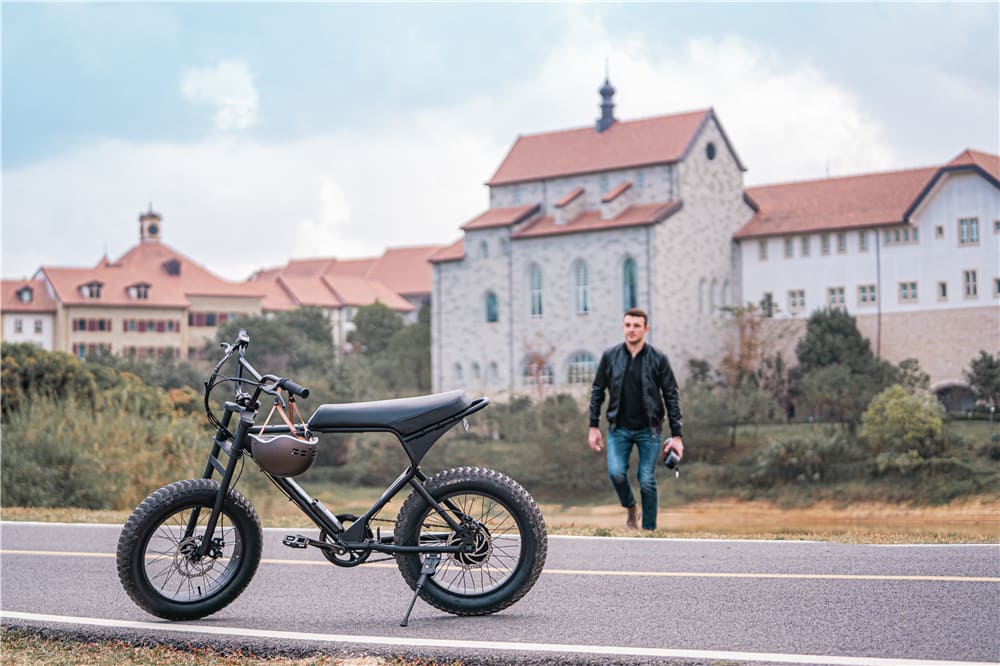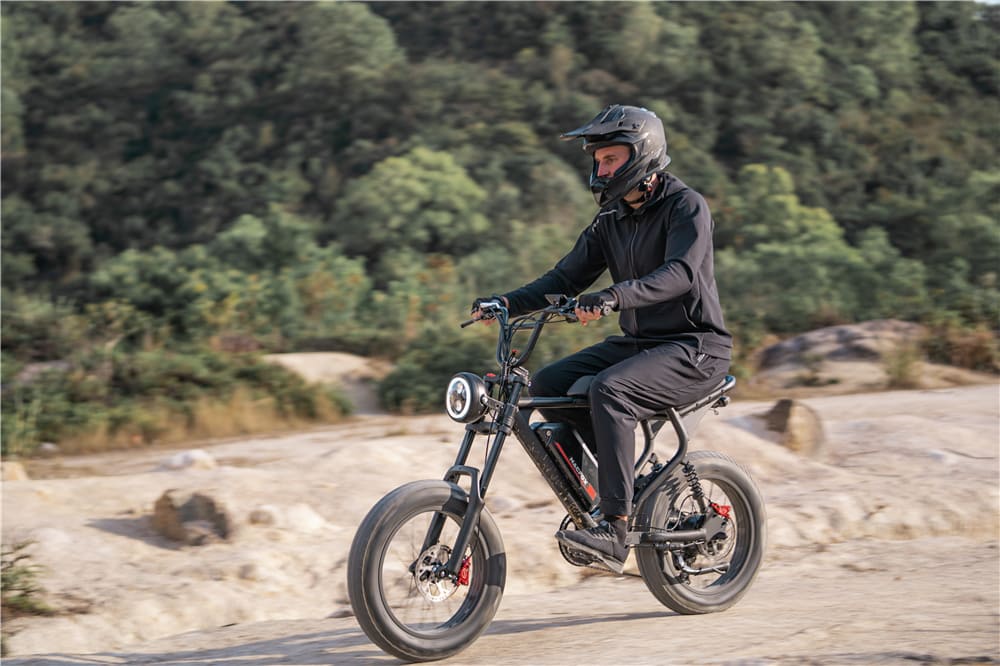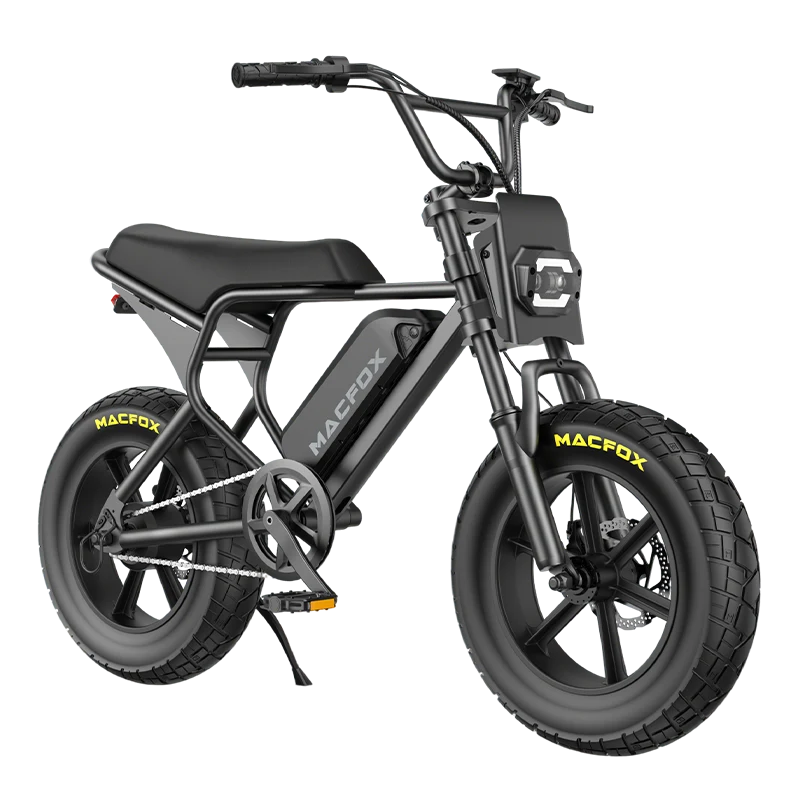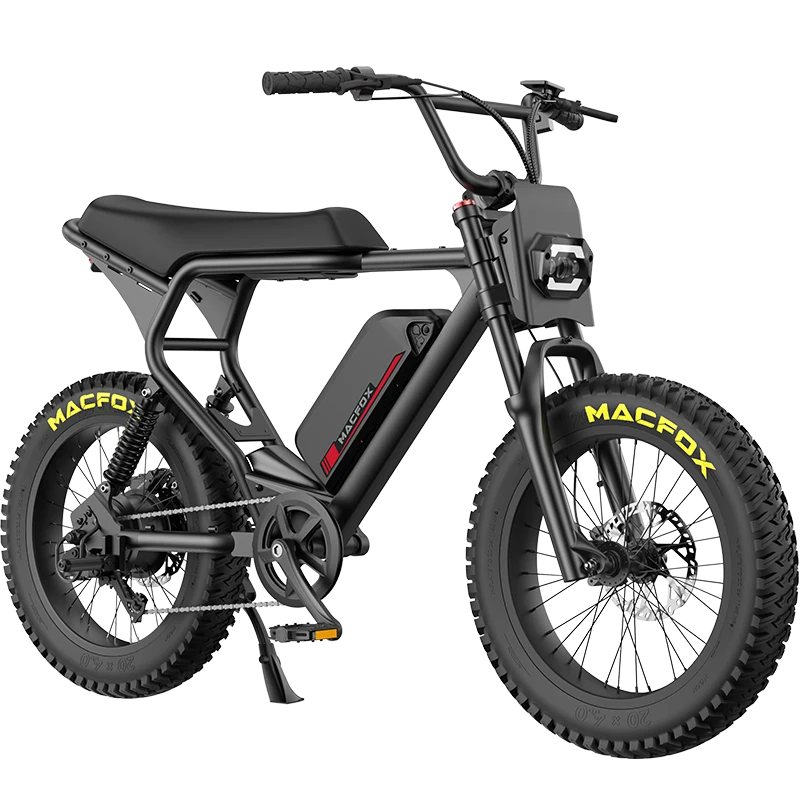E-bikes have taken the world by storm, offering an efficient and environmentally friendly mode of transport. But like any beloved ride, e-bikes require their own set of maintenance needs. Have you been wondering, "How much will this e-bike cost me in the long run?" Well, look no further - here we break down essential upkeep practices ranging from battery care to tire tread maintenance so you can keep your electric ride rolling without breaking your bank account!
Battery Care: The Heart of Your E-Bike

Your battery is more than just another component on your e-bike; it is the lifeblood that powers your journeys. Here's how you can ensure it keeps beating strong for years:
Optimize Charging Habits: For optimal battery longevity, charging at 20-80% capacity or maintaining it around 20% to 80% capacity should be the goal of each day's charging session. Doing this prevents damage and ensures battery health is preserved.
Understanding Temperature Sensitivity: Batteries are like Goldilocks: they thrive best under conditions that are neither too hot nor too cold. Extreme temperatures can diminish your battery's performance and lifespan, so charging or storing in temperatures below freezing or above 100degF (38degC) is to be avoided at all costs; for optimal storage during scorching summer heat or frigid winter chill, consider placing it in a climate-controlled environment for best results.
Storage Tips: If you plan on storing your e-bike for any length of time (say, off-season months), ensure the battery is charged to approximately 40-70% of capacity. This level will provide optimal battery health during dormancy and prolong its storage period. Furthermore, should storage exceed several months, it is advisable to recharge periodically to its optimal storage level for best performance.
Lifecycle and Replacement: Electric bike batteries typically offer 500 to 1,000 charge cycles before their capacity begins dwindling significantly. Reaching its cycle cap doesn't necessarily spell doom for your battery; rather, its capacity will start declining significantly over time and might no longer hold enough charge. Monitoring its performance over time will allow you to determine when its time for replacement arrives.
Tire Maintenance: Keep Your Rubber on the Road
Tires are your e-bike's sole point of contact with the ground, making them vital components in both riding experience and safety. Here's how to keep them rolling smoothly:
Pressure Checks: Regularly inspecting and adjusting tire pressure is of utmost importance. Too little air in your tires increases puncture risk, makes pedaling harder, wears out tires faster, and lowers traction significantly; too high of pressure makes for uncomfortable, bumpy rides and decreased grip, so follow your tire manufacturer's recommended pressure levels for optimal comfort, grip, and efficiency.
Inspection Routines: Before each ride, inspect your tires closely for signs of wear, such as cracks and cuts, as well as embedded objects like glass or thorns. Early detection can prevent flat tires mid-ride while prolonging their lifespan.
Selecting the Appropriate Tires: When replacing tires, consider your riding conditions. For off-road trails or trails with rough terrain, a thicker tread and puncture-resistant material may be better suited than a slicker tire, providing better puncture protection for urban riders. While high-quality tires may cost more upfront, their higher performance and longer life may be more cost-effective in the long run. The X2 off road electric bike launched by Macfox uses sturdy fat tires.
Rotation and Replacement: For even wear, regularly rotate your tires if one tire seems to wear faster than the others. In particular, rear tires typically wear out faster due to bearing the brunt of rider weight and motor force on many e-bike models; keeping an eye on tread depth indicators will allow you to determine when it may be time for replacements.
Related Reading: How Much Gas Does an Electric Bike Use?
Brake Systems: Power to Stop Matters
Your e-bike's brakes are your primary defense against accidents, making their maintenance an essential task. Here's how you can ensure they're always ready to perform:
Regular Inspections: Make it a habit to inspect your brake pads and discs regularly before every ride. Keep an eye out for signs that they need replacing, such as thin pads or grooved discs, as these could indicate they require replacement. Most brake pads feature wear indicators like small holes or lines that vanish when it's time for new sets to be installed.
Understanding Brake Types: E-bikes typically feature either mechanical disc brakes or hydraulic disc brakes. Mechanical brakes will need regular adjustments as their pads wear down, including tightening cable to maintain effective stopping power; hydraulic brakes self-adjust for pad wear but may need hydraulic fluid replenished periodically in order to remain responsive and reliable.
Maintenance and Adjustment: Ensuring your brakes are in optimal condition is of utmost importance, especially with mechanical systems like cables and levers being in good condition and tensioned properly. With hydraulic systems, watch out for signs of fluid leakage while making sure that they have been thoroughly bled to reduce air bubbles that reduce the efficiency of braking performance.
Replacement and Upgrades: When upgrading brake pads or discs, consider investing in higher-grade components if your current setup falls short of meeting your needs. High-end pads offer better-stopping power in wet or muddy environments while lasting longer overall; just ensure any upgrades fit with your e-bike's brake system before making a purchase decision.
Drivetrain Durability: Smooth Sailing or Uneven Ride?
The drivetrain comprises all the components that transmit power from your legs (or motor) to the wheels, such as chain, cassette, chainring, and derailleur. A properly functioning drivetrain ensures a more pleasant and efficient riding experience.
Regular Cleaning and Lubrication: Your drivetrain should be regularly cleaned to remove dirt, grime, and any foreign materials that can wear down components. A degreaser with soft bristles should be used to wash all chain links, gears, derailleur cages, and derailleurs before giving everything a thorough rinse under running water. After cleaning, apply an anti-rust lubricant designed specifically for bike chains to protect them against rust and wear - keeping your drivetrain well-lubricated reduces friction and increases efficiency while prolonging its lifespan!
Wear and Tear: Chains are often the first component in a drivetrain to show signs of wear. Stretched chains can quickly wear down cassette and chainring teeth, leading to poor performance and the eventual need to replace more parts. Use a chain checker tool to monitor chain wear so as to replace it before it reaches a critical point and further damage to components of your drivetrain.
Adjustments and Replacements: Adjusting the drivetrain properly is key to ensuring smooth shifting and optimal performance of any e-bike, including setting correct chain tension, adjusting derailleur for accurate gear changes, and regularly checking chainring/cassette teeth condition. If skipping, slipping, or other shifting issues arise, it may be time for replacement components to match up perfectly with your e-bike's specifications for optimal performance and longevity.
Consider Upgrades: If your drivetrain components are wearing out quickly or falling short of expectations, upgrading may be in order. Higher quality materials and designs may offer better efficiency, smoother shifting, longer lifespans, and greater cost efficiency, but they may come at an upfront premium cost.
Electrical System: The Nervous Center
Your electric bike's electrical system - made up of its motor, controller, display, and sensors - sets it apart from traditional bicycles. While essential to its operation, its maintenance requires less frequent intervention compared to its counterpart. Here's how you can ensure its peak condition:
Routine Checks: Perform periodic inspections to check electrical connections and components for signs of wear, corrosion, or damage, including exposed wiring, which could cause shorts or malfunctions. Ensure all connections are secure with no exposed wires that could potentially short out.
Keep It Dry and Clean: Even though many e-bikes are designed to withstand water exposure, it's wise to limit direct contact whenever possible, particularly with high-pressure jets that force water directly onto sensitive areas. After riding in wet weather, use a dry cloth to wipe down electrical components to remove moisture and prevent corrosion.
Software Updates: Your e-bike may receive updates from its manufacturer to improve performance, correct bugs, and potentially extend battery life. Check with them regularly to check for available updates, then follow their instructions for installing them.
Professional Inspection: If you encounter unexpected power loss or unusual behavior with your e-bike's electrical system, such as unexpected power loss or strange behavior, it's wise to contact a professional for inspection and repairs. Electrical systems on an e-bike can be complex systems for which DIY repairs could further compromise or even void warranties.

Cost-Saving Tips for E-Bike Maintenance
Maintaining an e-bike can be cost-effective if you take an aggressive yet proactive approach. Here are a few strategies that will keep costs under control while still guaranteeing an excellent ride:
Acknowledging Preventative Maintenance: Engaging in regular preventive maintenance for your e-bike can prevent minor issues from turning into expensive repairs. Small tasks like keeping it clean, checking tire pressure, and making sure the battery is fully charged will prolong its lifespan and extend its component lifespan.
Learn DIY Maintenance: There are various maintenance tasks you can learn how to perform on your e-bike yourself, such as changing tires, adjusting brakes, and cleaning out the drivetrain. There are plenty of resources online, such as tutorials and forums where e-bike enthusiasts share tips and advice - just be sure to tackle only tasks you feel confident taking on yourself, always consult your manual first when in doubt, and follow any directions given by it.
Make Sure You Use the Appropriate Tools and Supplies: Investing in a basic bike maintenance toolkit along with high-grade lubricants and cleaners can save money in the long run by enabling you to perform regular upkeep yourself and save on repair costs. Avoid household cleaners, as these can damage bike components.
Purchase Quality Parts: When replacing parts, it may be tempting to go for the least-expensive option; however, investing in quality pieces could save money over time by decreasing how frequently replacements must occur - particularly those that wear out more quickly, like tires, brake pads, and chains.
Join E-Bike Communities: Engaging with both local and online e-bike communities can provide invaluable support, knowledge, and advice. Members will often offer tips for maintenance, product recommendations, or assistance with repairs - making this an excellent way to learn new techniques while saving both time and money on maintenance.
Keep your e-bike's electrical system healthy and employ preventive maintenance strategies to enjoy an efficient, reliable ride without spending an arm and a leg on repairs and upkeep. A little care goes a long way toward increasing its lifespan and performance!
Conclusion
Maintenance can be daunting at first, but knowing exactly when and what needs attention can help reduce costs effectively. Remember, regular care not only saves money but also ensures your ride remains safe and enjoyable - take these tips on board and hit the Road knowing your e-bike maintenance is well under control!
FAQs
What frequency should I charge my e-bike battery in order to extend its lifespan?
Stay within the 20%-80% charge range to protect the life of your battery and extend its lifespan. Regular charging in this range helps preserve it.
When should I replace my e-bike's brake pads?
Replace brake pads when they show signs of significant wear, such as thinning pads, or when their wear indicators (small holes or lines) disappear. This typically happens every 2,000 to 3,000 miles, depending on riding habits and road conditions, although it could vary.
Are there any home maintenance options for my electric bike's electrical system?
Basic checks and cleaning of an e-bike's electrical system should be undertaken by yourself, but for any serious or complicated electrical system problems it's wiser to seek professional assistance as it could potentially cause further damage or invalidate warranties. DIY repairs on complex electrical systems could lead to further complications or invalidate warranties altogether.


















